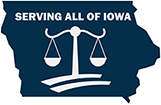- Parkersburg Personal Injury Attorneys
- Phone: 641-792-3595
- Directions
When accidents and injuries disrupt lives, personal injury lawyers become essential. They focus on representing those harmed by negligence, helping them obtain fair compensation. This article discusses the important role personal injury lawyers play in guiding individuals through their claims and aiding in recovery.
Proving Liability for a Car in a Right Turn Bicycle Accident
When a car turning right strikes a bicyclist, it's often referred to as a "right hook" accident. This commonly happens when a cyclist is riding on the right shoulder of the road or in the bike lane alongside a car. In these types of accidents, it's usually the driver's fault, but to prove that they were liable for your injuries, you must present proper evidence of their negligence.
How Right Turn Bicycle Accidents Occur
The most common scenarios for right turn bicycle accidents include:
1. Intersection Collisions: A car and a bicyclist approach an intersection, and the car turns right, failing to see the bicyclist until it's too late.
2. Overtaking Accidents: A bicyclist overtakes a slower moving car by passing on the right, putting themselves in harm's way when the car turns right.
3. Traffic Light Incidents: Both a bike and a car are waiting at a traffic light, and when the signal changes, the car turns right, cutting off or hitting the cyclist.
Liability for a Right Turn Bicycle Accident
To prove the driver was primarily at fault for the right turn accident, several types of evidence are necessary:
- Police Reports: These detail the accident scene and events as described by the responding officer, including any citations issued to the driver or cyclist.
- Eyewitness Accounts: Eyewitnesses can provide valuable insights into what the bike and car were doing prior to the collision.
- Negligent Behavior: A driver can be proven negligent if they were:
- Speeding
- Failing to use a turn signal
- Abruptly changing lanes
If witnesses report that the bicyclist was:
- Swerving between lanes
- Riding too close to vehicles
- Ignoring a traffic control device
this may be used as a defense in a bike accident claim by the driver.
Additionally, traffic cameras and surveillance footage from nearby businesses may capture the incident, providing further evidence.
Avoiding Right Turn Bicycle Accidents
To reduce the risk of right turn bicycle accidents:
- Maintain a Safe Distance: Keep a safe distance behind vehicles to anticipate when they might turn or change lanes.
- Check Mirrors: As you approach an intersection, check your mirrors for nearby vehicles.
- Avoid Passing on the Right: Only pass on the right if necessary, ensuring there is enough space to swerve out of the way of a right-turning car.
Rules of Driving on the Road When a Pedestrian is Present
According to the National Highway Traffic Safety Administration, every year about 70,000 pedestrians are injured in motor vehicle accidents in the roads and highways of the United States. Despite well-established laws for pedestrians and motorists, many accidents happen because of ignorance about the rules of driving on the road around pedestrians.
Iowa Rules of the Road Around Pedestrians
In Iowa, specific laws exist to protect pedestrians:
- Right of Way: Motorists must yield to pedestrians when entering or leaving a driveway, parking lot, or alley. They must also yield at intersections where pedestrians are crossing on marked or unmarked crosswalks without traffic signals.
- Special Precautions: Drivers should exercise extra caution in residential areas, near schools, shopping centers, parking lots, and congested areas like downtown.
Understanding Comparative Negligence Rule in a Car Accident Claim
When you've been seriously injured in a car accident, establishing negligence is crucial if you plan on pursuing compensation. Iowa car accident lawyers can evaluate your case to determine its validity and your eligibility for damages.
Comparative Fault in Iowa
Iowa follows the modified comparative fault – 51% rule. This means you can file a claim against the other driver only if your fault is 50% or less. If your responsibility for the accident is found to be 51% or higher, you cannot recover damages. However, if you're at fault for less than 51%, your damages may be reduced proportionally. For example, if the other driver made an unsafe lane change, but you were speeding, your claim might be reduced.
We Are Here To Help
Remember, you are not alone in recovering from your injuries. We have helped thousands of Iowans through their physical, emotional, and financial recoveries. If you have questions about what you are going through, feel free to call our office for your confidential injury conference. We will take the time to listen to you and give you our advice concerning your injury matter at no cost or risk to you.
Free Book at No Cost
If you are not ready to speak with an attorney yet but would like to learn more about Iowa injury cases including tips about how you can avoid making common costly mistakes request a copy of our Iowa Personal Injury book which includes 14 myths about Iowa injury cases and 5 things to know before hiring an attorney.
If you have specific questions about your injury matter feel free to call our office to speak with our Injury team at 641-792-3595 or use our Chat feature by clicking here 24 hours a day/7 days per week. Your information will remain confidential and there is no cost or obligation.

